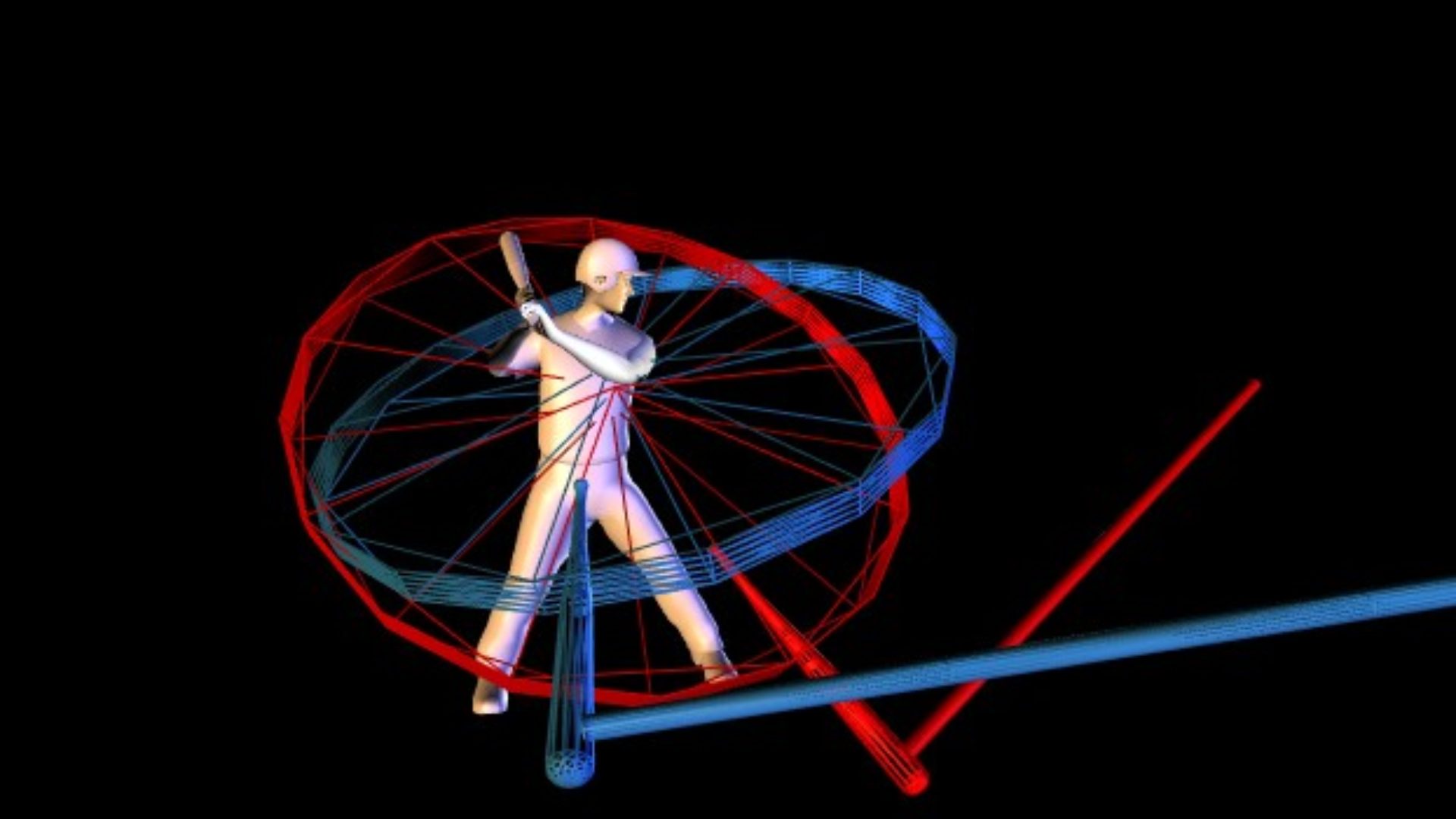Bat-to-ball skills are typically considered a core fundamental of hitting by scouts, player development professionals, and others within the baseball community. Recently, there has been quite a bit of discussion on the topic. In a Twitter poll conducted by Jason Ochart, voters identified bat-to-ball skills as the most important skill for a hitter.
Here’s the problem with using contact rate metrics to assess Bat-to-Ball skills – there is no connection between contact rate and overall performance. In fact, zone contact rate actually has a statistically significant negative relationship to overall performance – albeit small. The main point, however, is that there is no ‘raw’ contact frequency metric that correlates positively to overall performance, regardless of which metric is used (contact rate, K rate, swinging strike rate, etc.).
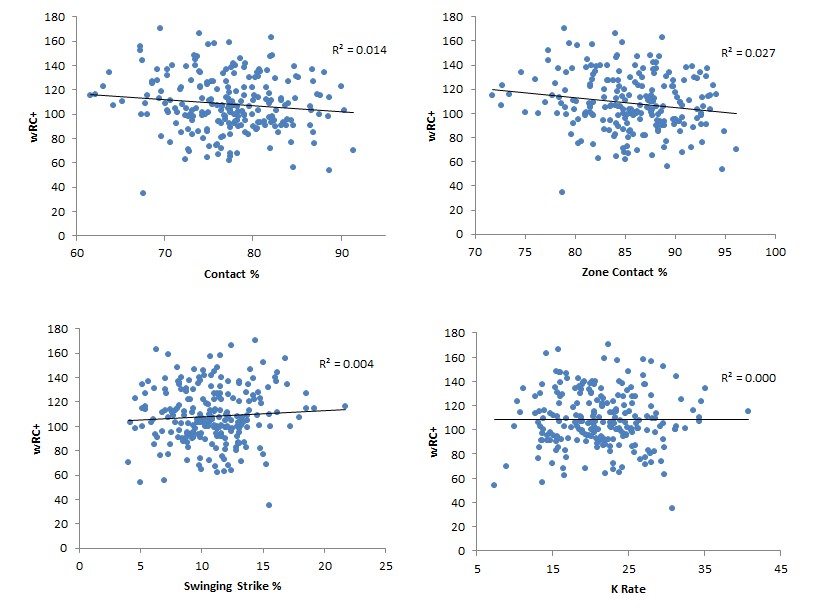
This is very counter-intuitive – how can more whiffs not detract from overall performance? Even a poorly hit ball should have more value than a swing and miss. The main reason for this is that ball performance can sometimes be inversely correlated to hitter performance. An example that might help in understanding how this can happen is hitting with backspin. Backspin balls get more carry, distance and overall performance but at the hitter level, ‘bad contact’ goes up faster than well-hit backspin balls. For those who have read Quantitative Hitting, this is likely no surprise. There is also an article here on the subject. In evaluating hitting metrics or characteristics, the complete distribution of results for a given strategy or approach must be considered – not just the desired outcomes.
Contact Quality and Contact Quantity Are Inversely Related
It is quite surprising that the lack of contact is second only to exit velocity in determining contact quality as measured by xWOBAcon.
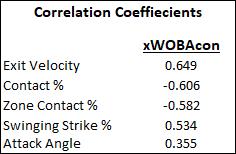
Now, you may say that correlation is not necessarily causation and that it is a selection issue – in other words – that the majority of hitters would profile as either power or contact but few players have both skills. While that view is partially correct as we will see in the data below, there is also a definite relationship between the change in contact quality and change in contact rate indicating that there is causation.
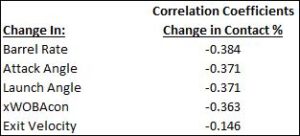
Based on the change coefficients above, the amount of loft in a player’s swing (i.e., attack angle, launch angle) is more closely associated with the change in contact rate than the change in exit velocity. So while the player type selection issue discussed above may hold for bat speed, players who change their attack angles tend to see an improvement in contact quality (xWOBAcon) and a reduction in their contact rate.
If you think about bunting as an extreme, the bat has little or no bat speed and can be placed in the plane of the pitch for a long time – and results in a very high contact rate. As hitter attack angles (and resulting launch angles) increase, there is more damage on contact but the swing path and incoming pitch path are in alignment for a shorter time resulting in less contact. What we need then, are metrics that consider bat-to-ball skills relative to contact quality.
Proposed Metrics to Better Measure Bat-to-Ball Skill
Since swing speed and swing path have a significant impact on contact rate, we don’t want to say a player has good bat-to-ball skills if their high contact rate is primarily being driven by a slow, low lofted swing. Conversely, a player with high bat speed and above average attack angle may actually have much better bat-to-ball skills than what the raw contact rate is reflecting. What we need are metrics that will get us closer to the ‘true’ skill we are actually trying to measure.
There are many ways swing speed and swing path adjustments to contact rate could be made. While we have a proprietary metric on our site which uses a hitter’s SG_Path Score and Power ranking to come up with an Isolated K Rate as a proxy for bat-to-ball skill, the industry needs something that anyone could measure based on publicly available data. Both xWOBAcon and barrel rate have strong correlations to the contact frequency metrics and could be used to come up with a metric that would better assess bat-to-ball skill.
Linear Model for xWOBAcon and Contact Percent:: We will use a linear regression equation between xWOBAcon and contact rate to generate an estimate of contact rate solely based on contact quality.
Expected Contact Rate = 100.28 + -59.43(xWOBAcon)
Then, we can take a player’s actual contact rate and subtract the portion associated with contact quality above to come up with a remaining value which would better isolate “true” bat-to-ball skill. A second iteration of the above was used with in-zone contact relative to in-zone xWOBAcon in order to consider low quality contact on out of the zone pitches but the results were very similar.
After carving out the contact quality component as show above, some players such as Yordan Alverez and Ronald Acuna, Jr. who are not much better than average in ‘raw’ contact show as superior ‘true’ bat-to-ball skills. Others, such as Juan Soto and Freddie Freeman are also in the top decile after the contact quality adjustment.
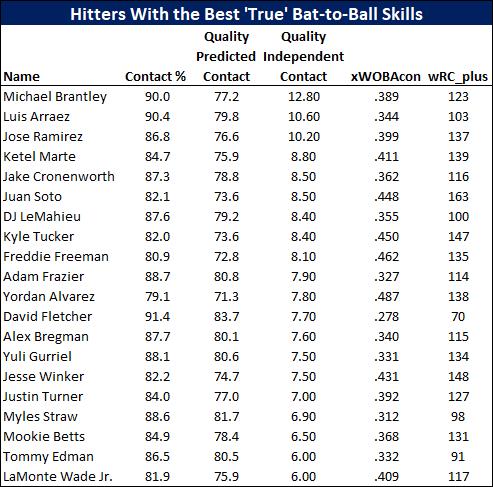
…and, the relationship between the adjusted or ‘true’ bat-to-ball skills metric is now positively correlated to overall performance.
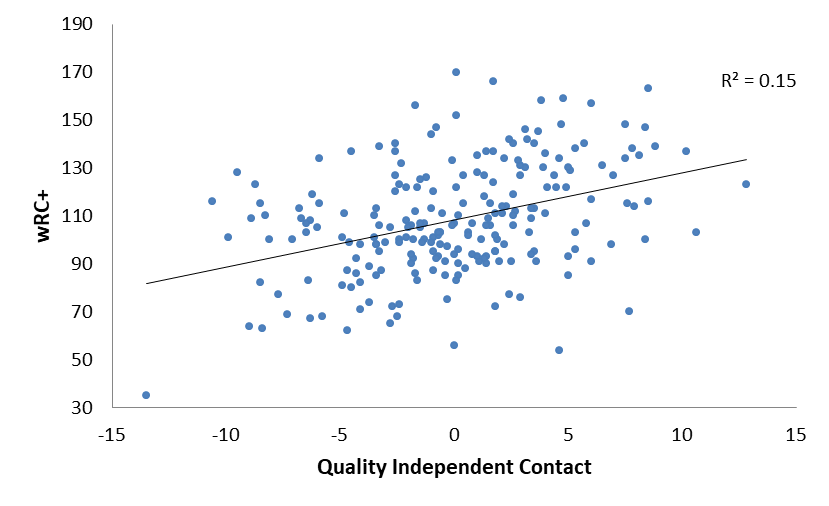
Lastly, this is not meant to be the end-all, be-all for assessing bat-to-ball skills but rather a starting point for a discussion about how we might develop metrics to measure bat-to-ball skills in a more meaningful way.
